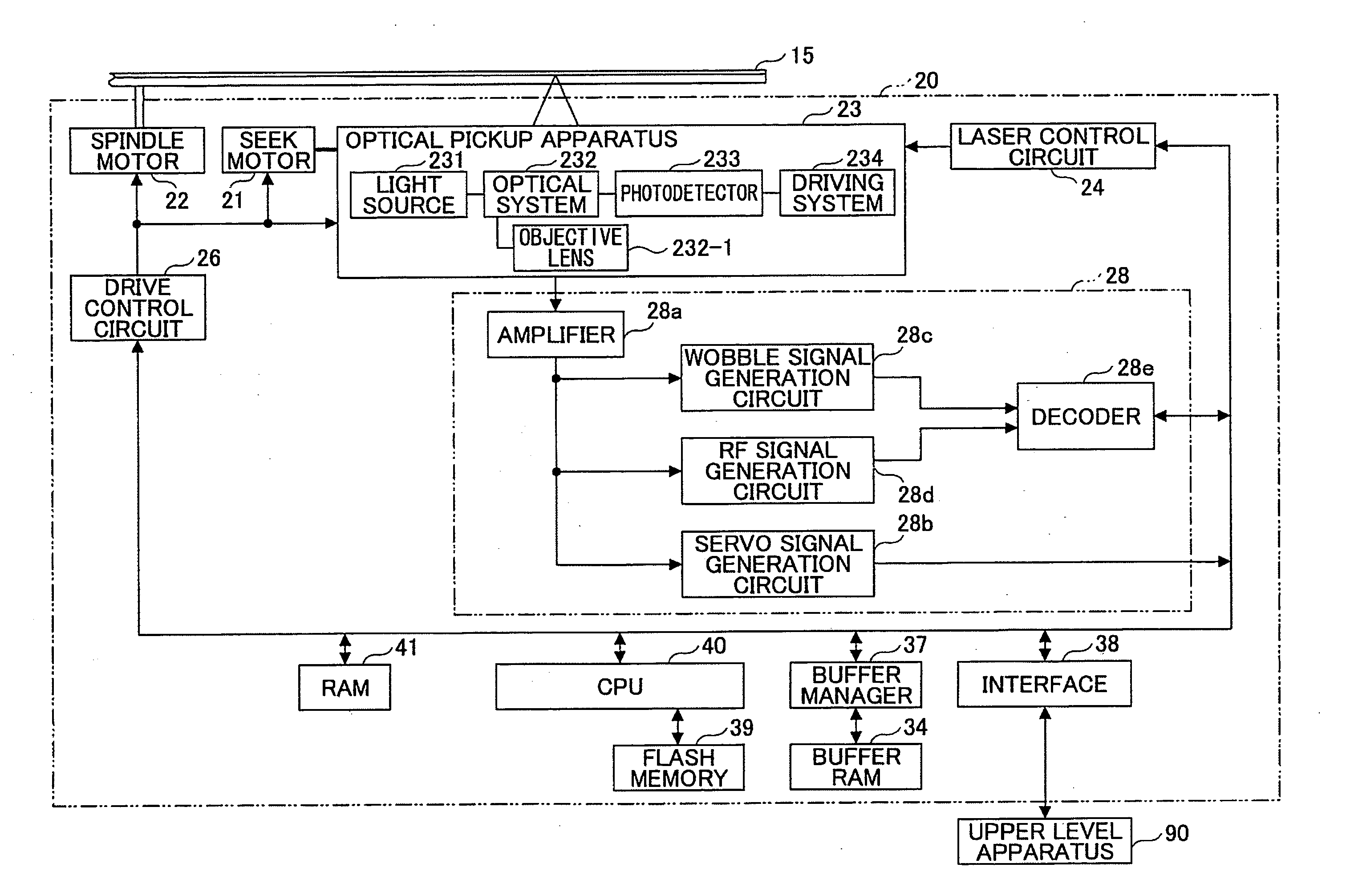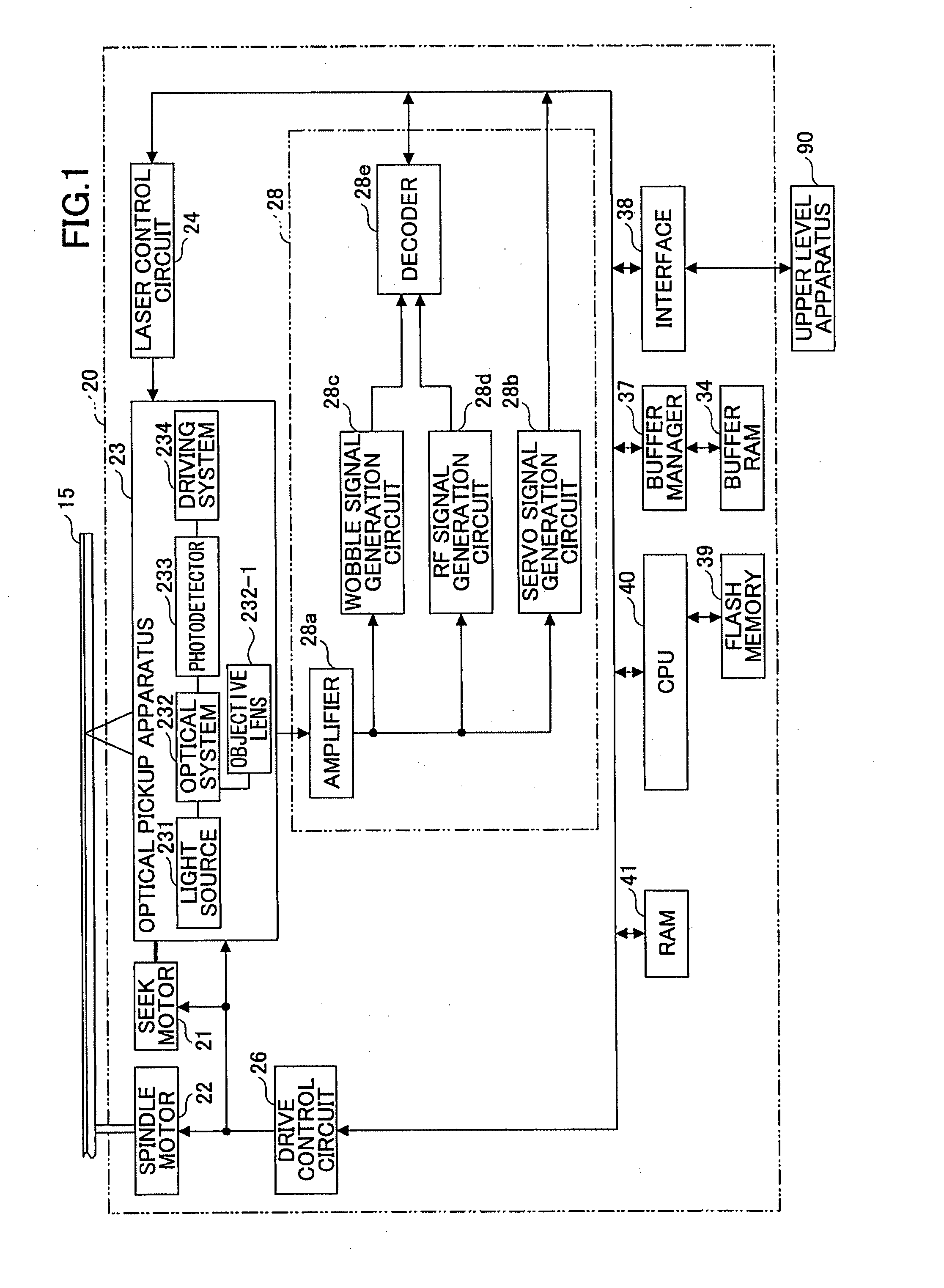Data reproduction method, data reproduction apparatus, optical disk, and data recording/reproduction apparatus
- Summary
- Abstract
- Description
- Claims
- Application Information
AI Technical Summary
Benefits of technology
Problems solved by technology
Method used
Image
Examples
Embodiment Construction
[0105] In the following, embodiments of the present invention are described with reference to the accompanying drawings.
[Section 1]
[0106]FIG. 1 is a schematic diagram showing an optical disk apparatus 20 according to an embodiment of the present invention.
[0107] In FIG. 1, the optical disk apparatus 20 includes, for example, a spindle motor 22 for rotating an optical disk 15, an optical pickup apparatus 23, a seek motor 21 for driving the optical pickup apparatus 23 in a radial direction, a laser control circuit 24, a drive control circuit 26, a reproduction signal processing circuit 28, a buffer RAM 34, a buffer manager 37, an interface 38, a flash memory 39, a CPU 40, and a RAM 41. It is to be noted that the arrows illustrated in FIG. 1 indicate the flow of representative signals and data and do not indicate the entire connection relationship of each of the blocks. The optical disk 15 according to an embodiment of the present invention is a super-resolution optical disk for ena...
PUM
 Login to View More
Login to View More Abstract
Description
Claims
Application Information
 Login to View More
Login to View More - R&D
- Intellectual Property
- Life Sciences
- Materials
- Tech Scout
- Unparalleled Data Quality
- Higher Quality Content
- 60% Fewer Hallucinations
Browse by: Latest US Patents, China's latest patents, Technical Efficacy Thesaurus, Application Domain, Technology Topic, Popular Technical Reports.
© 2025 PatSnap. All rights reserved.Legal|Privacy policy|Modern Slavery Act Transparency Statement|Sitemap|About US| Contact US: help@patsnap.com



